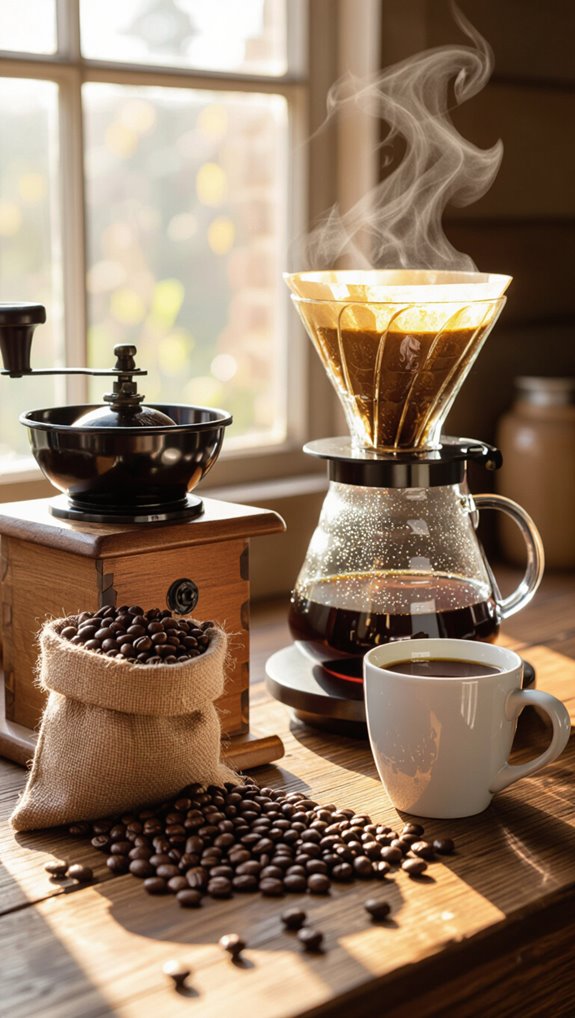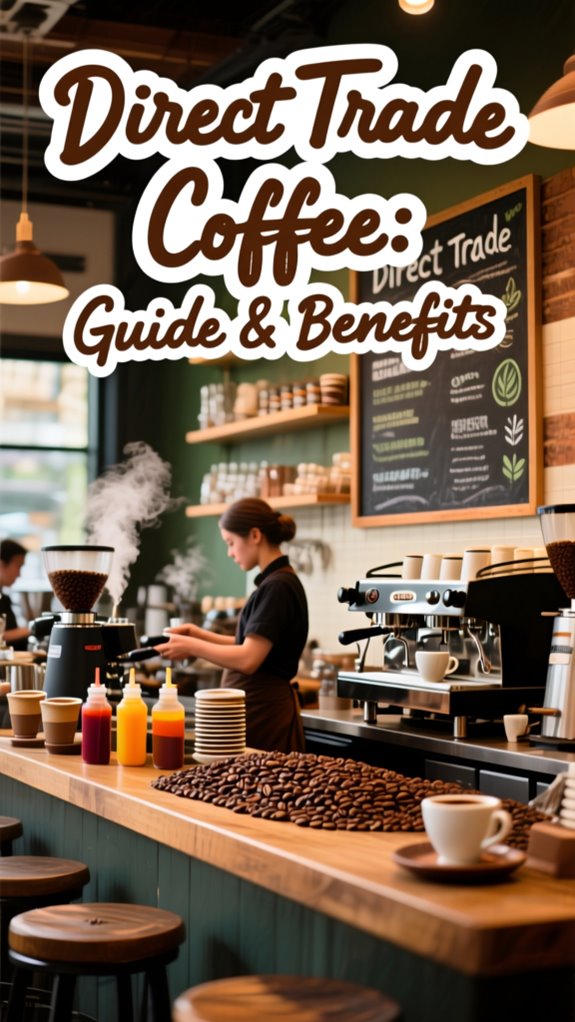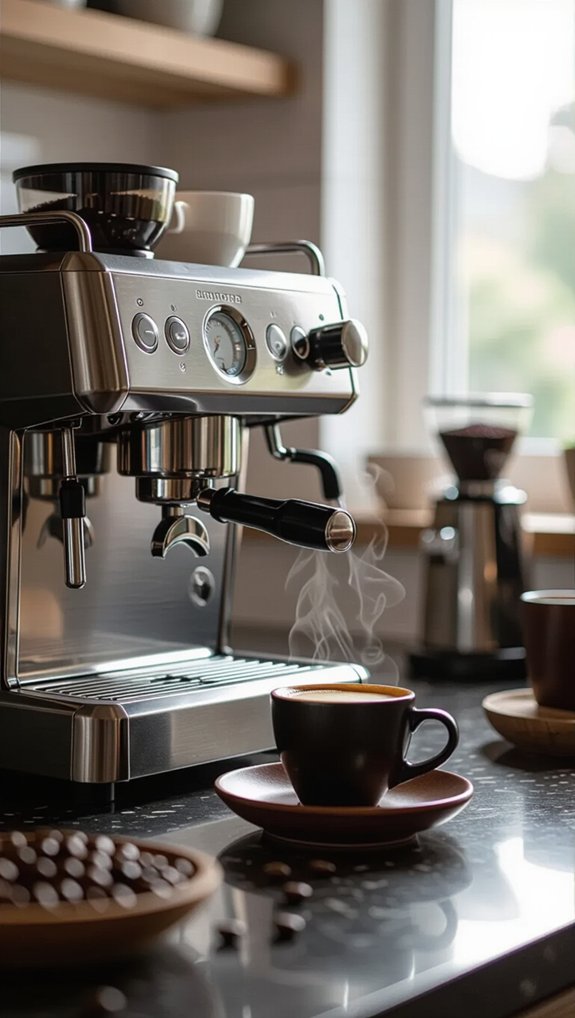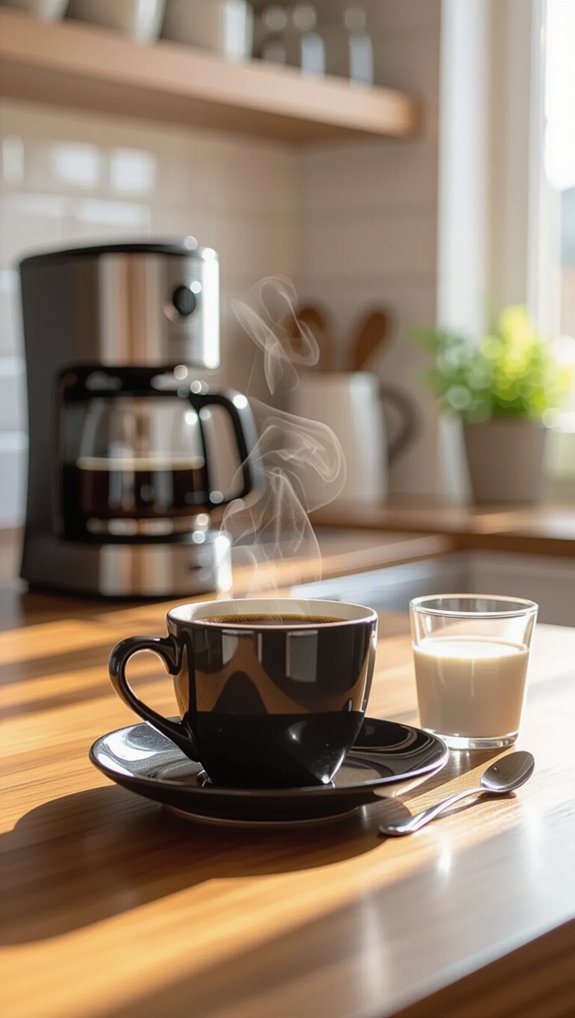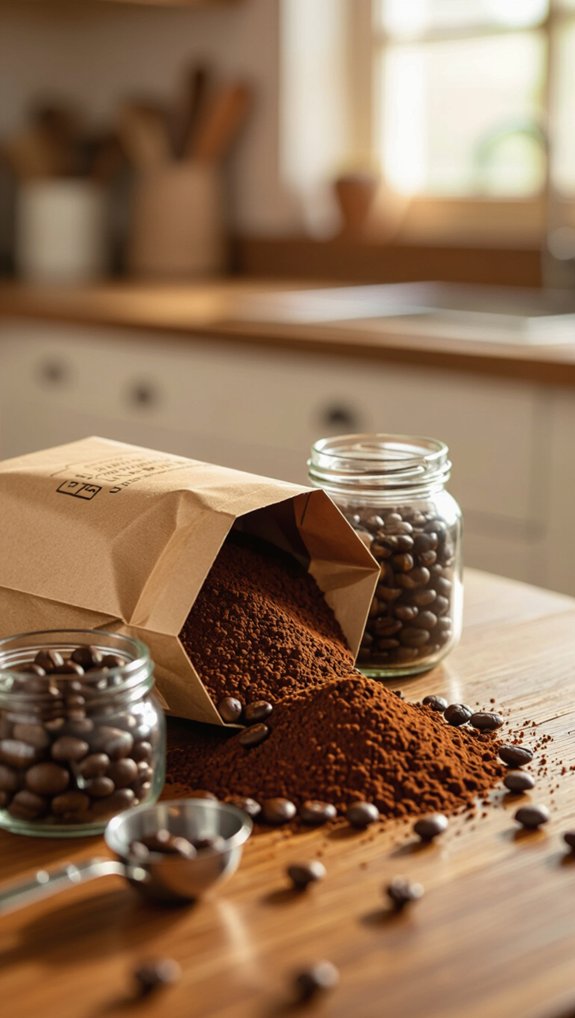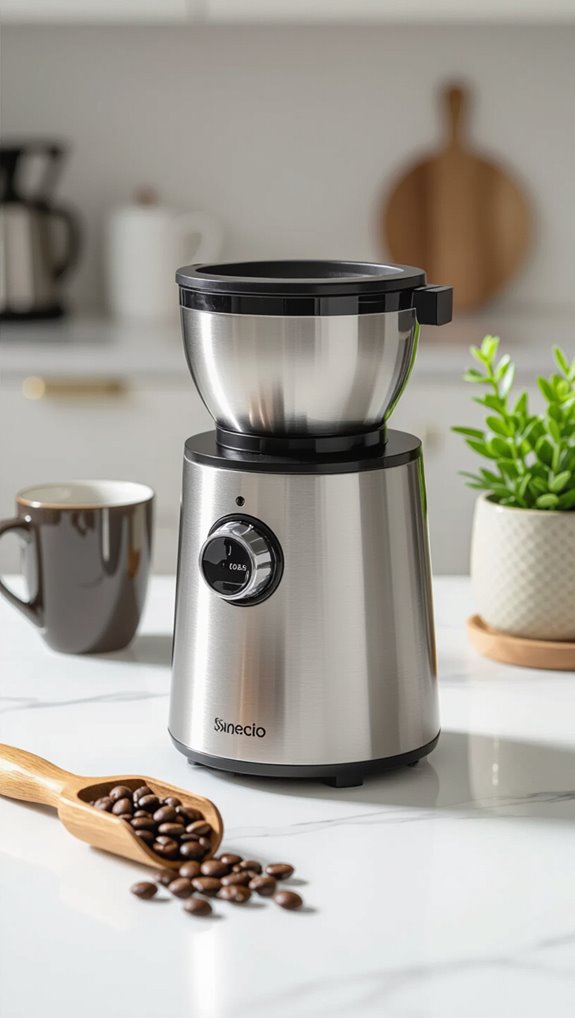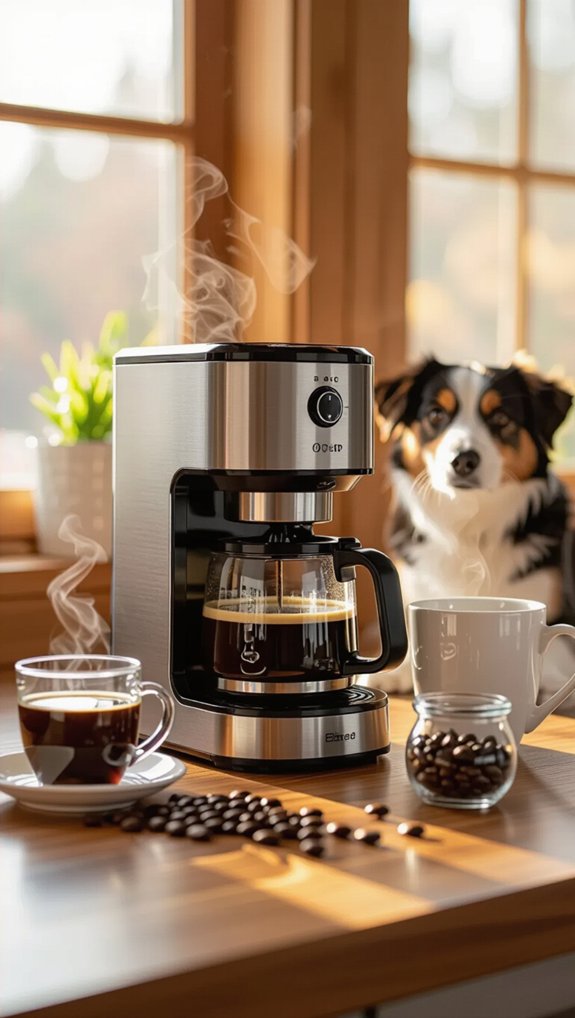Wondering what makes your coffee shop’s “direct trade” beans worth the premium price? Many coffee lovers find themselves confused by marketing terms like direct trade, fair trade, and single origin, unsure of what actually impacts their cup’s quality and the farmers who grew it.
Direct trade coffee represents a sourcing model where roasters work directly with coffee farmers, cutting out traditional middlemen to ensure better prices for growers and higher quality beans for consumers. This approach prioritizes long-term relationships, transparency, and exceptional coffee over the commodity-based system that has dominated the industry for decades.
In this guide, you’ll discover how direct trade differs from other certification systems, why it benefits both farmers and coffee drinkers, and how to brew these premium beans to highlight their unique characteristics. We’ll also explore which roasters are leading the direct trade movement and how to identify authentic direct trade coffee.
Table of Contents
What is direct trade coffee, really?

While traditional coffee trading involves multiple middlemen, direct trade coffee flips the script by creating a more transparent, farmer-focused purchasing model.
Roasters connect directly with farmers, establishing long-term relationships that prioritize quality and fair pricing.
This approach goes beyond standard commodity trading by offering significant premiums—often 2-3× market rates—for exceptional specialty coffee lots.
Direct trade emphasizes traceability, allowing buyers to understand exactly where their beans originate and how they’re produced.
How does direct trade coffee work?

Direct trade coffee cuts through traditional commodity trading by creating a straightforward, farmer-focused purchasing model that connects roasters directly with coffee producers.
By visiting origins, tasting cupping samples, and building relationships, roasters negotiate pricing premiums that often exceed market rates.
They work closely with farmers to specify processing methods and quality standards, frequently offering pre-financing and equipment investments.
Trusted local exporters handle logistics while maintaining transparency, ensuring farmers receive fair compensation.
This approach allows roasters to track precise details like lot quality, purchase prices, and producer information, creating a more ethical and traceable coffee supply chain.
Direct trade vs fair trade differences

When you’re passionate about coffee, grasping how it reaches your mug matters—and the sourcing methods make a big difference. Direct Trade and Fairtrade represent two distinct approaches to ethical coffee purchasing, each with unique strengths. Direct Trade lets roasters build personal producer relationships, often paying 2-3× commodity prices for exceptional quality.
Fairtrade, by contrast, provides standardized pricing protections through third-party certification, guaranteeing minimum prices and community premiums. While Direct Trade prioritizes transparency and collaboration, Fairtrade focuses on worker protections. Both aim to improve producers’ lives, but their methods differ dramatically in pricing, verification, and relationship dynamics.
Benefits for farmers, roasters, drinkers alike

Because ethical coffee sourcing impacts everyone in the bean’s journey, direct trade creates a win-win scenario that elevates coffee quality while supporting producers’ livelihoods.
Farmers receive pricing premiums 2-3x market rates, enabling investments in sustainable practices and improved processing.
Roasters gain tighter quality control through direct relationships, selecting specific lots with consistent flavor profiles.
Consumers benefit from unprecedented transparency—knowing exactly where their coffee originates, who grew it, and how much farmers were paid.
These meaningful connections transform coffee from a commodity into a story of collaboration and respect.
Does direct trade coffee taste better?

Wondering if direct trade coffee truly elevates your morning brew? Yes, direct trade often delivers superior taste through specialized relationships between coffee farmers and roasters.
By paying premiums for higher-quality lots and collaborating closely, specialty coffee roasters can request specific processing methods that enhance flavor profiles. The direct trade approach allows for greater traceability and transparency, enabling roasters to cup and score samples, provide farmer feedback, and select beans with distinct terroir characteristics.
However, quality isn’t guaranteed—excellent roasting and quality control remain critical for transforming those carefully sourced beans into an exceptional cup.
Price, ethics, and premium farmer payouts

Direct trade coffee isn’t just about great taste—it’s a commitment to fair economic practices that directly benefit coffee farmers. Through negotiated prices and premium payouts, farmers receive fair compensation often 2–3× higher than commodity market rates.
Cupping scores drive pricing, with exceptional lots commanding impressive premiums. Transparency and traceability are key, with roasters publicly disclosing purchase details.
Pre-financing and investments in sustainable farming practices help farmers improve long-term economic stability. However, concentration risk remains a challenge—robust direct trade models diversify buyer relationships to protect farmers from potential economic vulnerability.
Top origins in direct trade partnerships
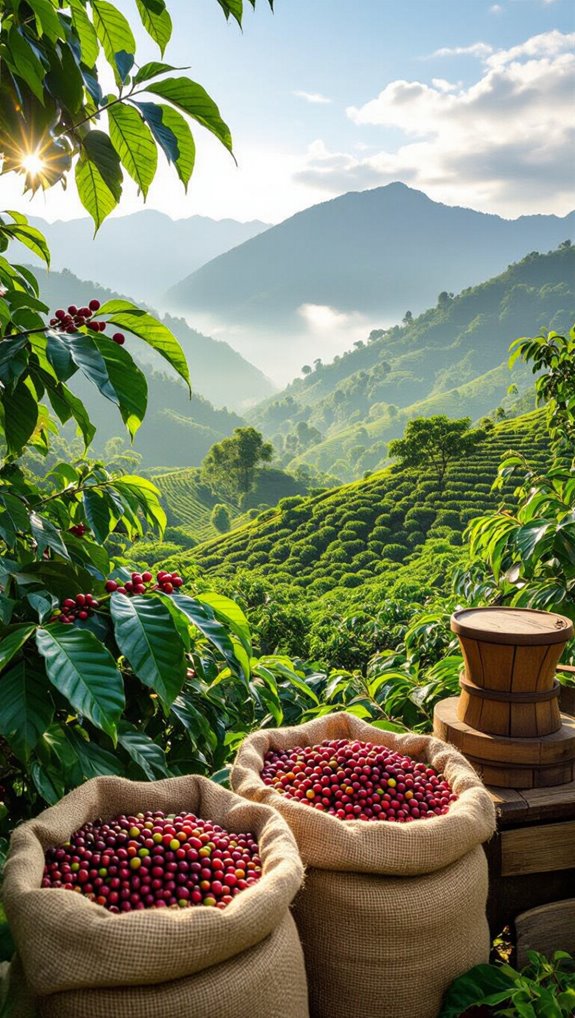
Fair prices pave the way for exceptional coffee, and comprehension where these remarkable beans originate reveals the heart of direct trade partnerships.
Top origins showcase the commitment to quality and sustainability:
- Ethiopia’s Yirgacheffe delivers heirloom varieties through specialty roasters
- Colombia’s Huila region provides high-altitude washed Arabica
- Guatemala’s Huehuetenango features transparent farm-level partnerships
- Honduras and Nicaragua offer consistent micro-lots via cooperatives
- Peru and Mexico emphasize organic, traceable coffee sourcing
Direct trade isn’t just about buying coffee—it’s about building relationships that elevate farmers, communities, and the incredible beans we love to brew.
Where to buy direct trade coffee
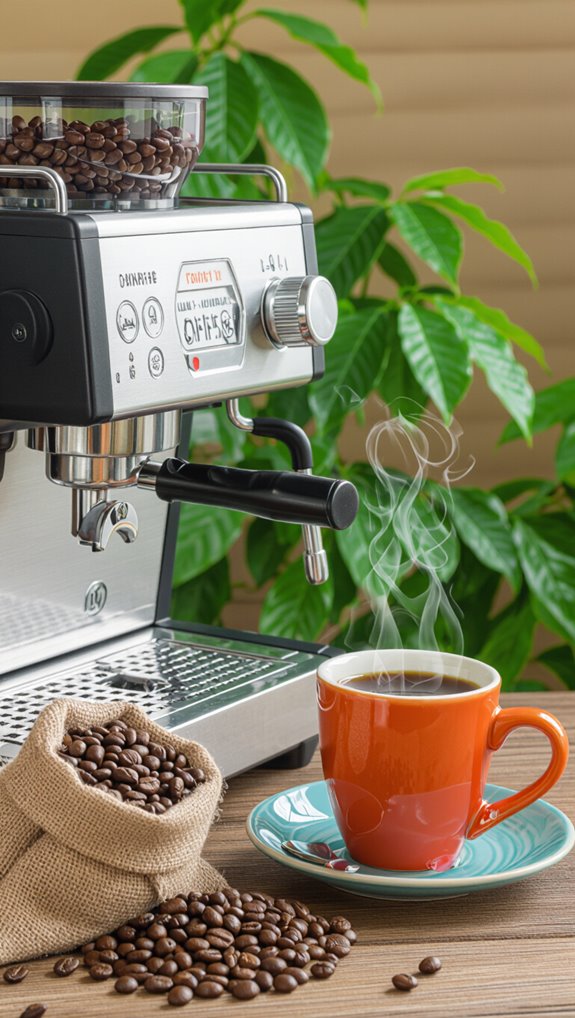
When you’re craving exceptional, ethically sourced coffee, navigating the world of direct trade can feel like a treasure hunt—but I’ve got your map to the best beans.
Specialty roasters like Onyx Coffee Labs and Olympia Coffee are your top destinations, offering transparency reports and beans from named farms.
Explore micro-roasters and online marketplaces like Trade Coffee, which showcase single-origin lots with impressive cupping scores.
Subscription services provide an easy way to discover new direct trade coffees, often including detailed farmer profiles and origin stories.
Don’t hesitate to email roasters directly for sourcing details.
Best gear for direct trade beans
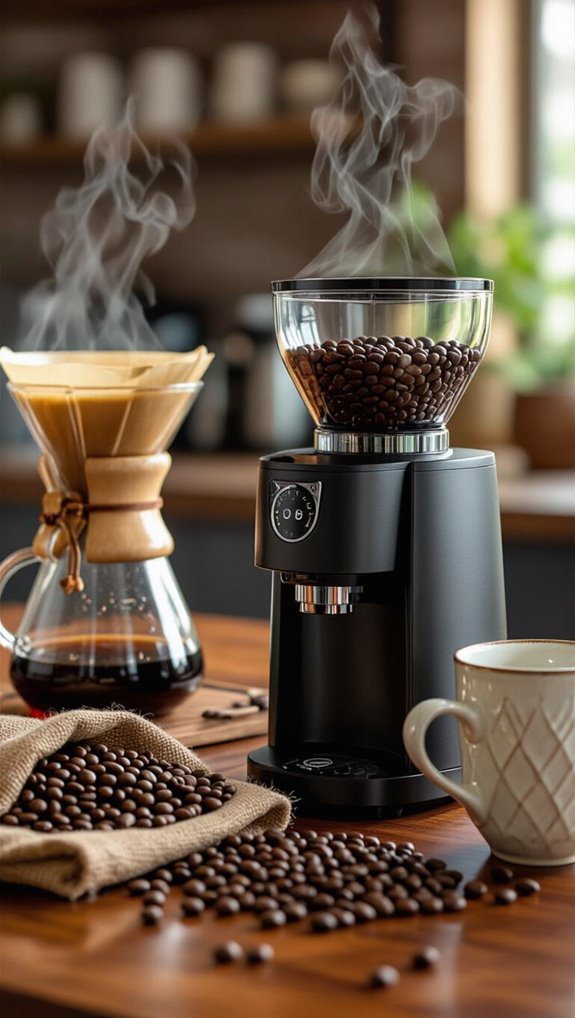
Specialty coffee gear matters immensely when brewing direct trade beans, transforming good coffee into an extraordinary sensory experience. The right equipment unlocks subtle flavor nuances in these exceptional beans:
- Use a precision burr grinder with stepless settings
- Choose a temperature-stable gooseneck kettle for precise pouring
- Invest in a scale accurate to 0.1 g for consistent brewing
- Consider a refractometer for scientific extraction analysis
- Select a PID-controlled espresso machine for precise temperature control
With a high-speed commercial burr grinder, neutral paper filters, and an opaque airtight container, you’ll preserve and highlight each bean’s unique origin characteristics, elevating your brewing game from basic to brilliant.
How to brew direct trade coffee
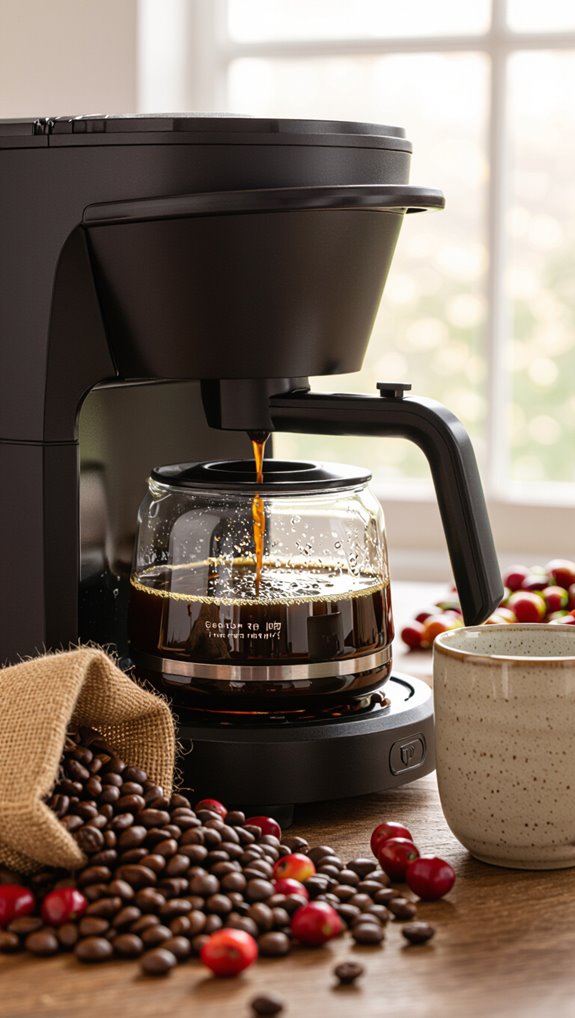
Let me break down brewing direct trade coffee into three key areas: the right ingredients, essential equipment, and precise brewing instructions to unlock those incredible origin-specific flavors.
I’ll walk you through selecting fresh beans, choosing your ideal brewing method, and making professional-level adjustments that transform good coffee into an exceptional experience.
Whether you’re passionate about pour-over or espresso, these techniques will help you maximize the unique characteristics of your carefully sourced direct trade beans.
Ingredients
Because direct trade coffee represents a pinnacle of quality and ethical sourcing, brewing it requires precision and care to unlock its full potential.
Key ingredients for the perfect cup include:
- 15-18 grams of freshly roasted, single-origin direct trade coffee beans
- Filtered water (75-150 ppm total dissolved solids)
- Whole beans to grind just before brewing
- Precise brew ratio of 1:16-1:17
- Water temperature between 92-96°C (197-205°F)
Equipment
To brew exceptional direct trade coffee, you’ll need to gear up with the right equipment that transforms high-quality beans into a sublime cup.
Start with a reliable burr grinder that offers precise grind size adjustments for different brew methods, from espresso to French press. A digital scale is crucial for measuring coffee and water ratios accurately—aim for a 1:16 coffee-to-water relationship.
Don’t forget a quality gooseneck kettle to control water temperature between 92–96°C and an airtight container to preserve those precious beans’ freshness and flavor.
Instructions
With your brewing gear ready, mastering the art of preparing direct trade coffee comes down to precision, technique, and grasping the unique characteristics of your beans. Follow these key steps to elevate your brewing:
- Weigh your freshly roasted direct trade beans, aiming for a 1:16 coffee-to-water ratio
- Select the appropriate grind size based on your brewing method (medium-fine for pour-over, coarse for French press)
- Pre-wet paper filters and heat water to 92–96°C to extract nuanced flavor profiles
- Bloom your coffee for 30–45 seconds, allowing gases to release and enhancing extraction
- Adjust brewing technique incrementally to highlight the specific origin’s unique flavor notes
Frequently Asked Questions
What Does Direct Trade Coffee Mean?
I buy coffee directly from farmers, bypassing middlemen, which means I pay better prices, build lasting relationships, and ensure higher quality beans while promoting more transparent, ethical sourcing practices.
What Are the Disadvantages of Direct Trade?
I’ll be honest: direct trade isn’t perfect. It’s costly for roasters, risky for farmers, and often involves hidden intermediaries. Small producers can struggle with export complexities, and concentrated relationships leave both buyers and sellers vulnerable to sudden market shifts.
What Is an Example of a Direct Trade?
I’ll show you how Stumptown Coffee’s partnership with El Injerto farm in Guatemala exemplifies direct trade: they pay premium prices, fund processing upgrades, publicly disclose farm details, and build a transparent, long-term relationship with the producer.
What Is the Difference Between Fair Trade and Direct Trade?
I’ll break down the key difference: Fair Trade is a certified system with set minimum prices and social premiums, while Direct Trade is an unregulated approach where roasters directly negotiate prices and quality with farmers, often paying higher premiums.
In Conclusion
Direct trade coffee represents more than just another purchasing method—it’s a meaningful way to connect with the farmers who dedicate their lives to growing exceptional beans. This approach answers the core question of what is direct trade coffee by demonstrating how transparent relationships, fair pricing, and quality focus create better outcomes for producers and consumers alike. When you choose direct trade, you’re supporting sustainable farming practices while enjoying coffee that tells a story of passion and craftsmanship.
The beauty of direct trade lies in its simplicity: cutting out middlemen to forge genuine partnerships that benefit everyone involved. From the farmer receiving fair compensation to you experiencing incredible flavors, this model proves that ethical sourcing and exceptional taste go hand in hand.
Ready to brew your direct trade discoveries to perfection? Check out our coffee machine reviews to explore smart, well-reviewed options that will help you unlock every nuanced flavor note from these carefully sourced beans.

